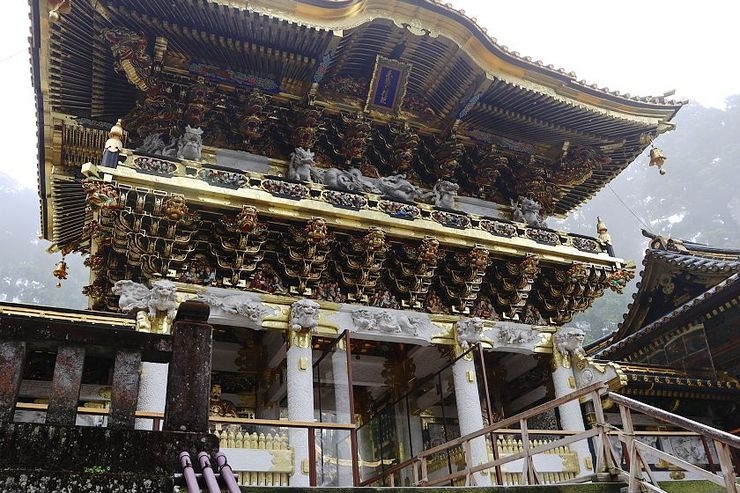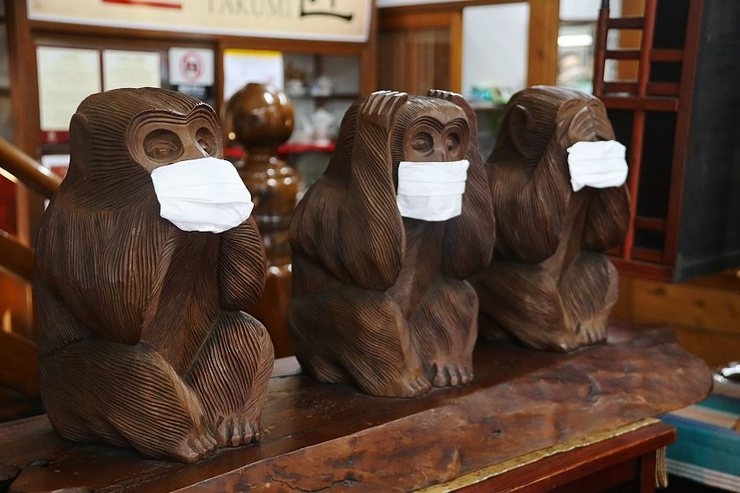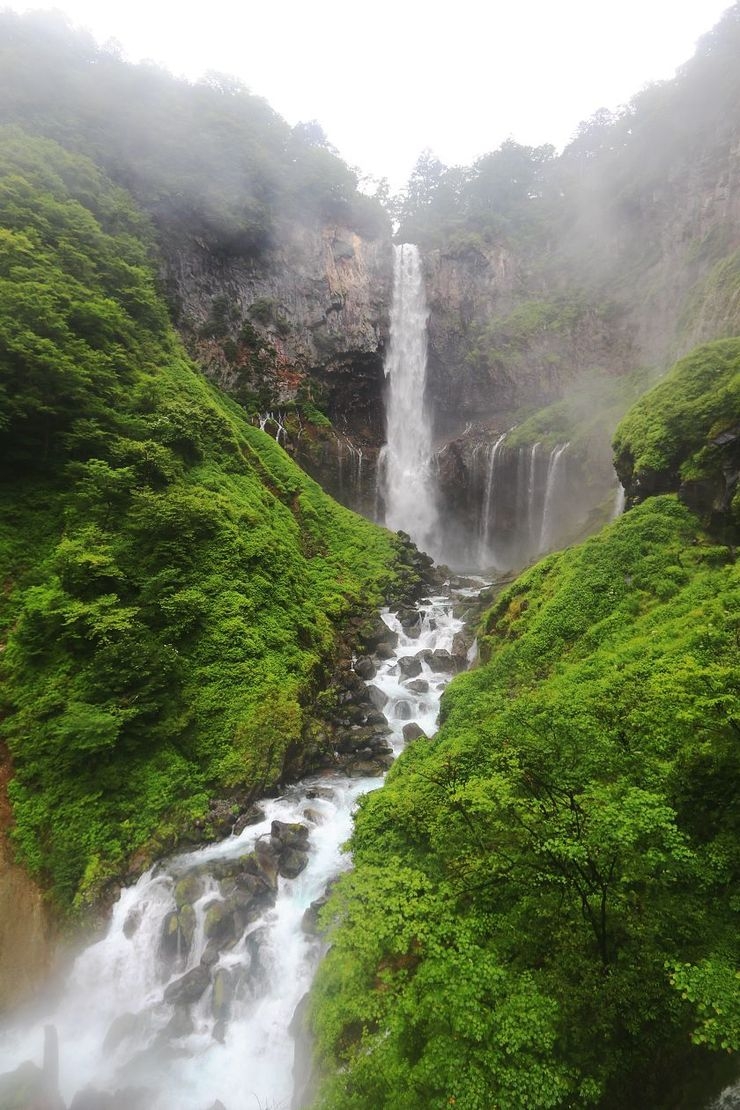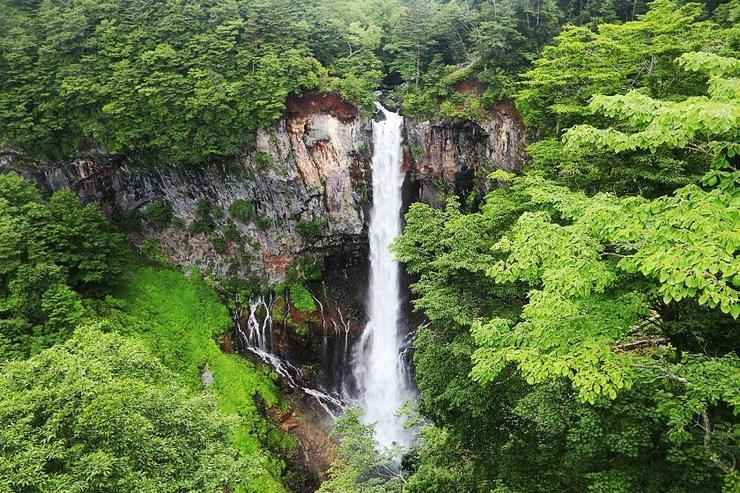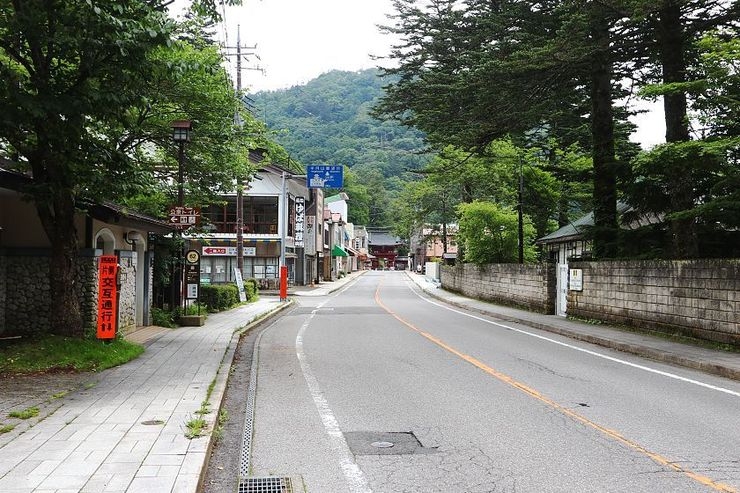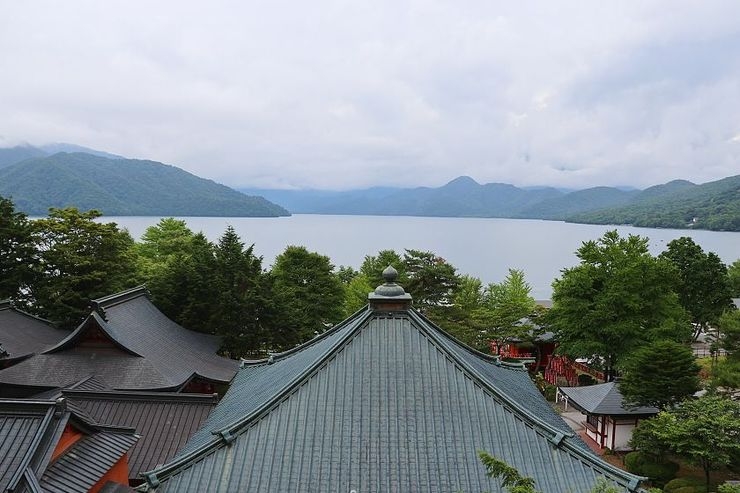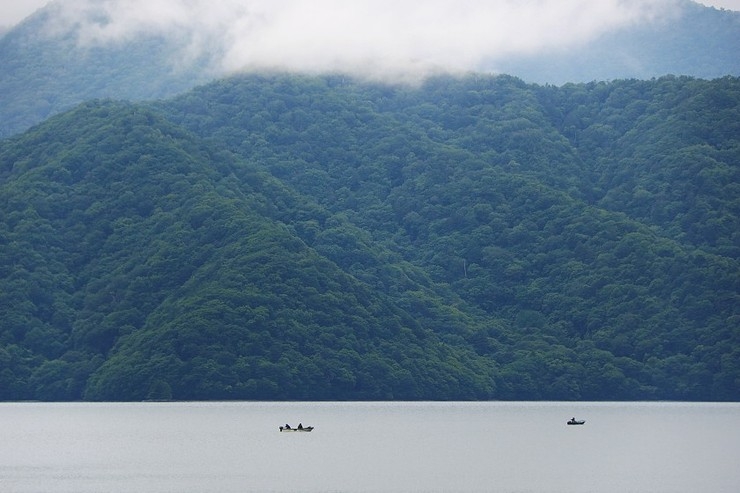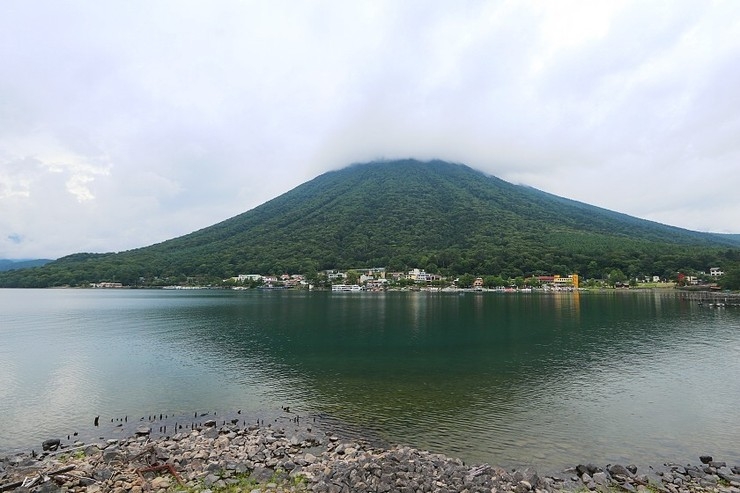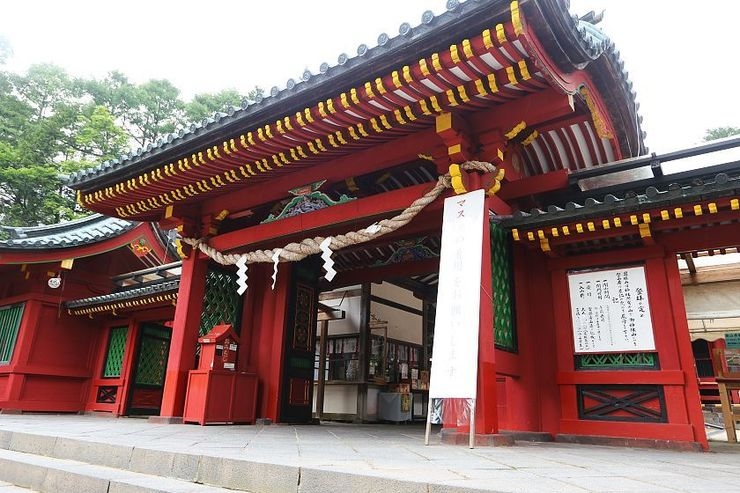
No crowds at Tobu Nikko Station
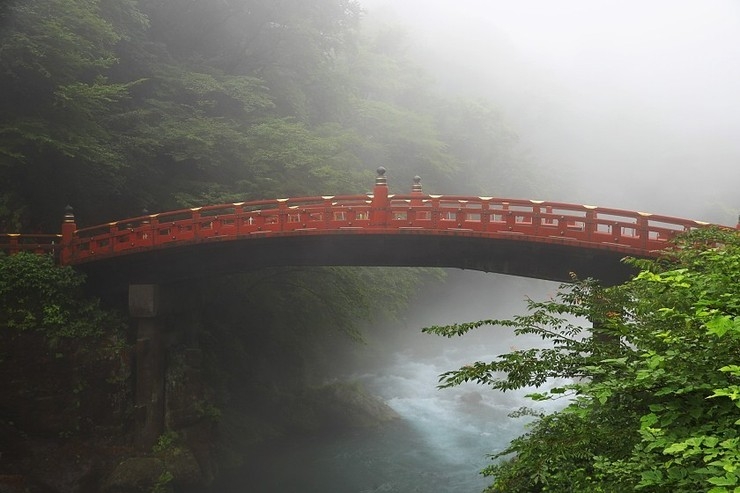
The Shinkyo Bridge
From there I made my way to the entrance of the Toshogu Shrine, the most important of Nikko's religious sites and its most popular sightseeing spot.
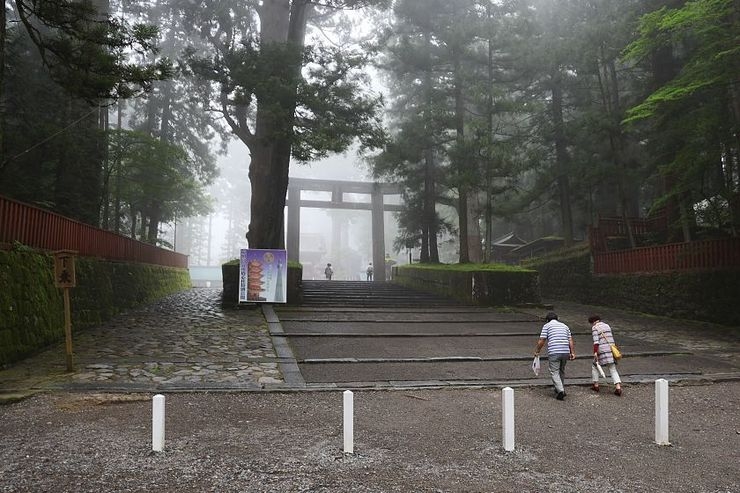
Near the entrance of the Toshogu Shrine
Tickets are purchased at the outer gate using touchscreen panels and collected upon entry by an attendant from behind a plastic screen, keeping contact to a careful minimum. The use of hand sanitizer did not appear to be mandatory, but bottles could be found at the ticket machines and inside the gates at a reception desk, while a message over a tannoy reminded visitors to observe social distancing and wear masks "as much as possible". As is now commonplace for public spaces in Japan, the service desk offering souvenirs and collector's stamps was draped with a plastic sheet and all staff wore varying levels of protective equipment, from surgical masks to plastic visors.
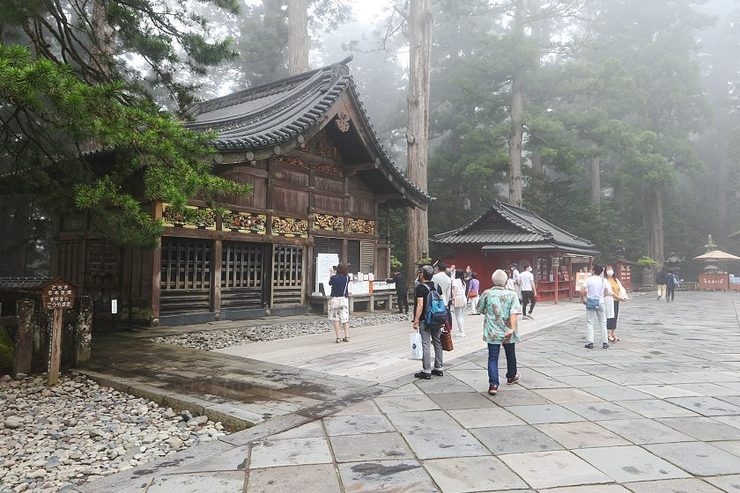
Visitors outside the sacred stables of Toshogu Shrine
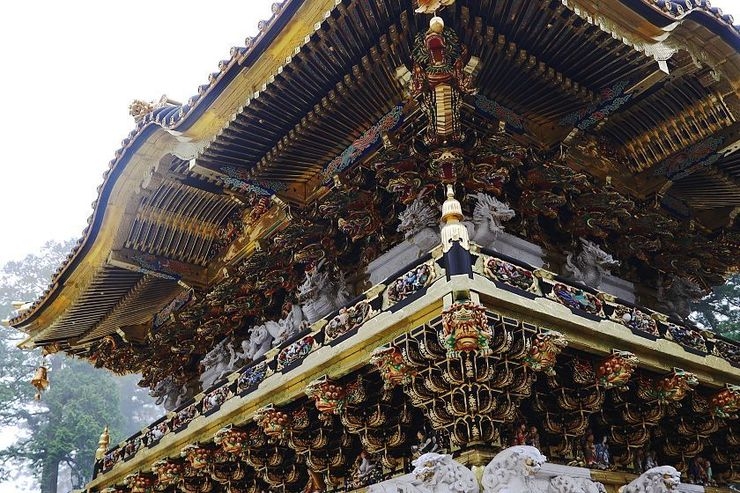
View of the Yomeimon Gate
Although far from crowded, the shrine and its sacred precinct were by far the busiest location I would see today, with a fairly steady stream of visitors at the beautifully decorated Yomeimon Gate and on the stone path leading through the woods to the tomb of Tokugawa Ieyasu.
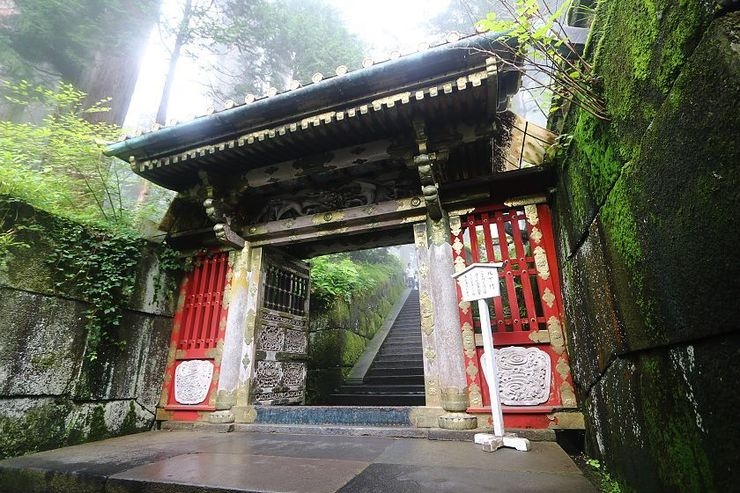
Gateway and steps leading to Tokugawa Ieyasu's tomb
From the Toshogu Shrine I made my way down to Rinnoji Temple, a large temple belonging to the Tendai sect and the most important Buddhist structure in Nikko. Outside, I saw just a handful of other visitors, including a Japanese tour group.
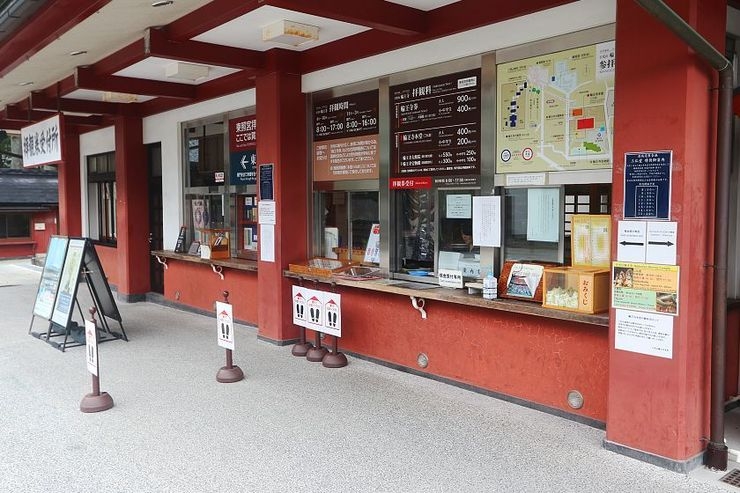
Rinnoji Temple ticket office
The admission process here was similar to the Toshogu Shrine, but upon entry I was led on a quick circuit of the temple by a young monk covering its various treasures, in particular the three enormous statues of Amida Buddha, Senju Kannon and Bato Kannon, then over to the temple's treasure house. Here we were given a brief introduction to prayer beads, often seen in Tendai Buddhist worship and ritual. All temple staff wore surgical masks and tour group sizes were kept to a minimum.
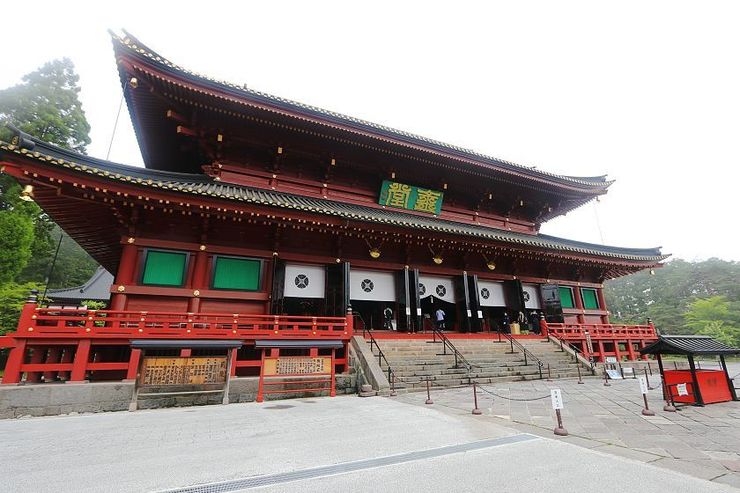
View of Rinnoji Temple
A short distance from the more elaborate Toshogu Shrine, Futarasan Shrine is a far older structure dedicated to the deities of Nikko's three most sacred mountains. Today, there didn't appear to be any special restrictions in place but I saw just half a dozen or so visitors within the shrine precinct.
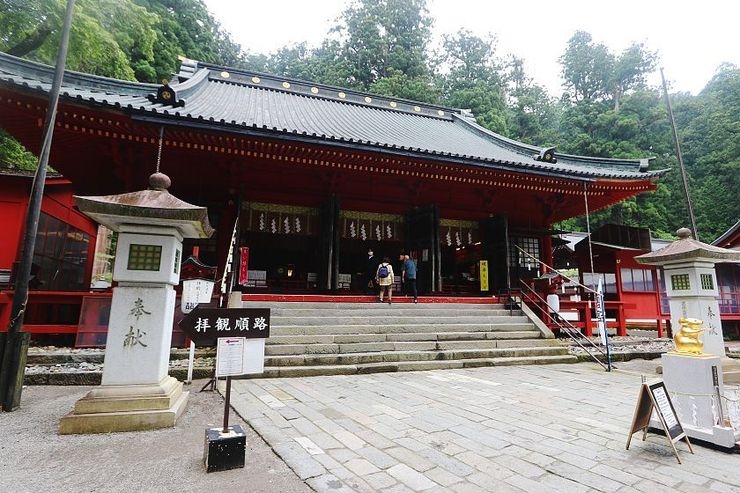
Futarasan Shrine
My next stop was Taiyuin, mausoleum of third Tokugawa Shogun Iemitsu, grandson of Ieyasu. Just like Toshogu and Rinnoji, admission was a simple matter of purchasing a ticket from a touchscreen panel and handing it to an attendant through a window. The long pathway leading to the entrance was almost completely empty, and within the temple precinct I saw fewer than a dozen other visitors, allowing unobstructed views of the beautifully decorated buildings.
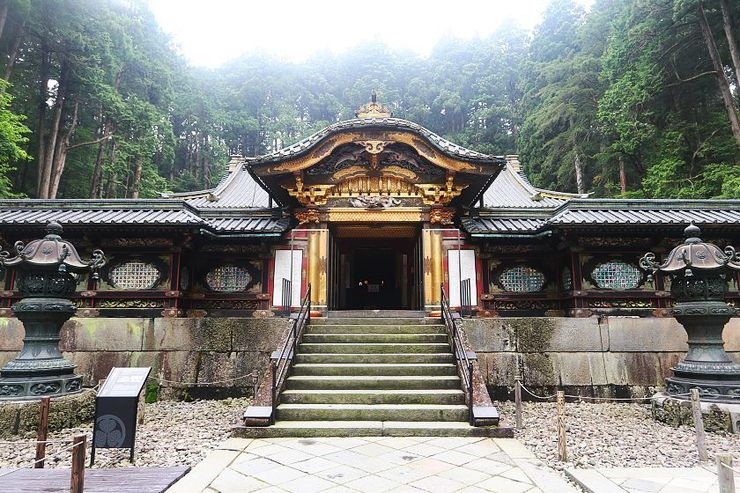
View of Tayuin's prayer hall
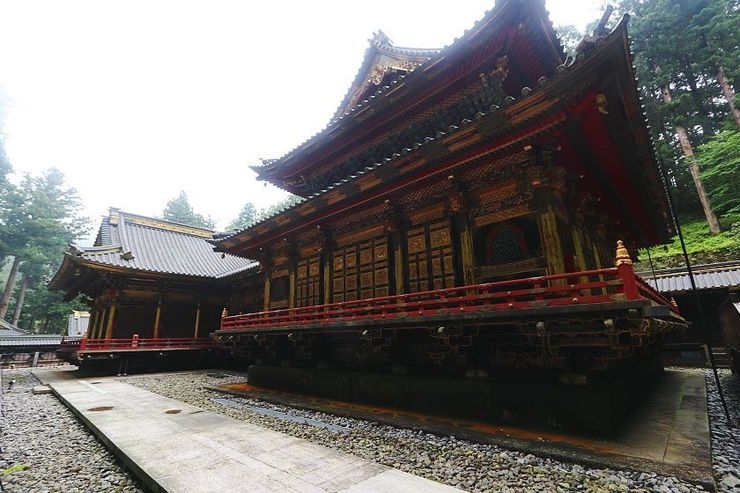
Side view of Tayuin showing the prayer hall and inner sanctuary
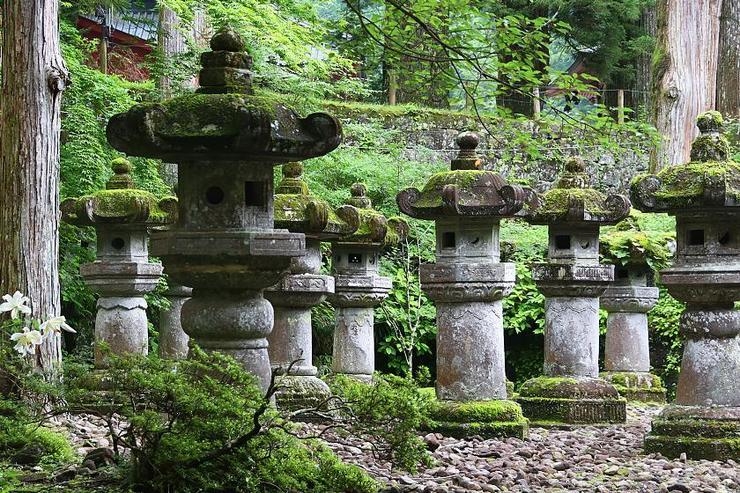
Stone lanterns in Tayuin's grounds
